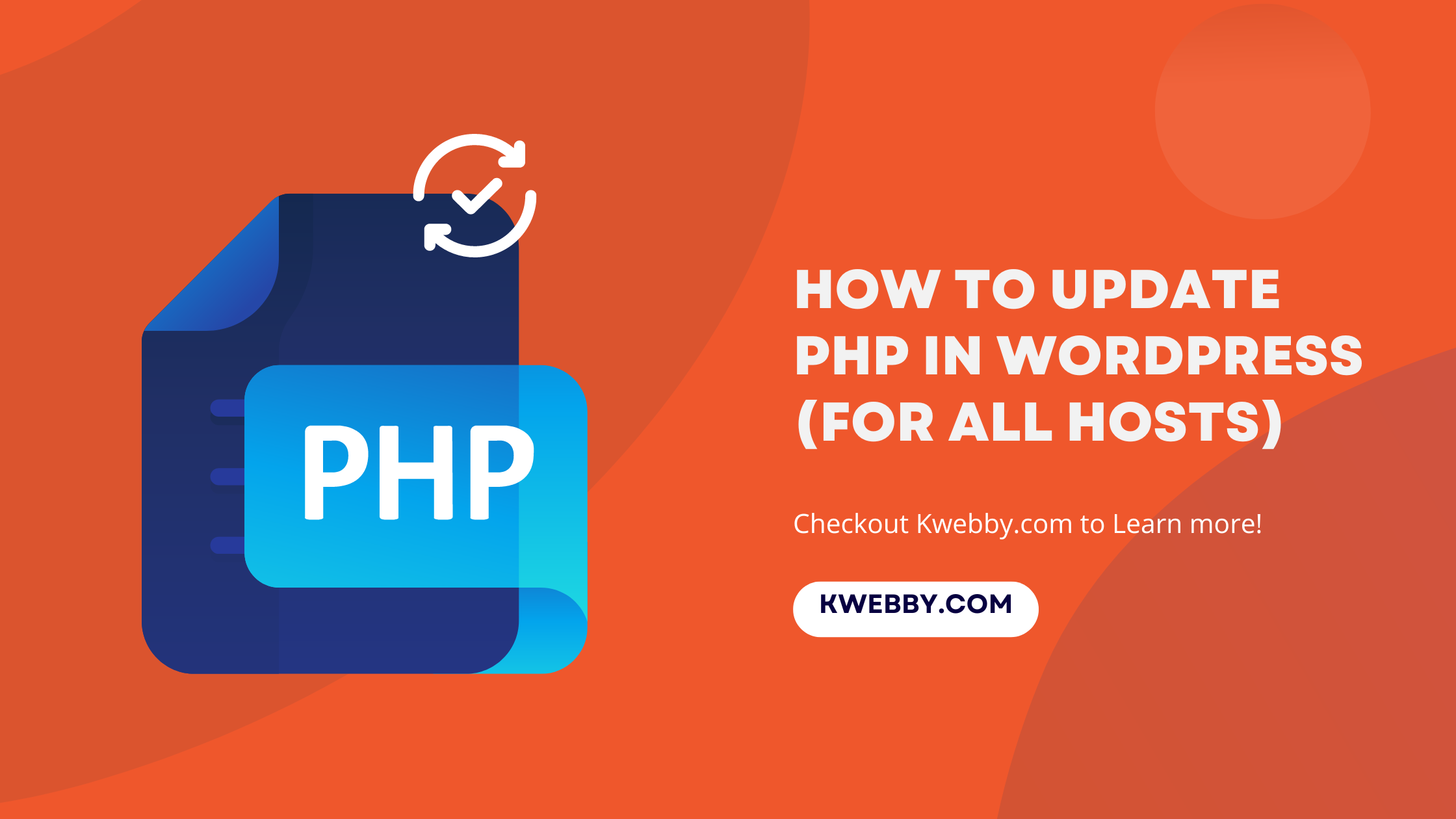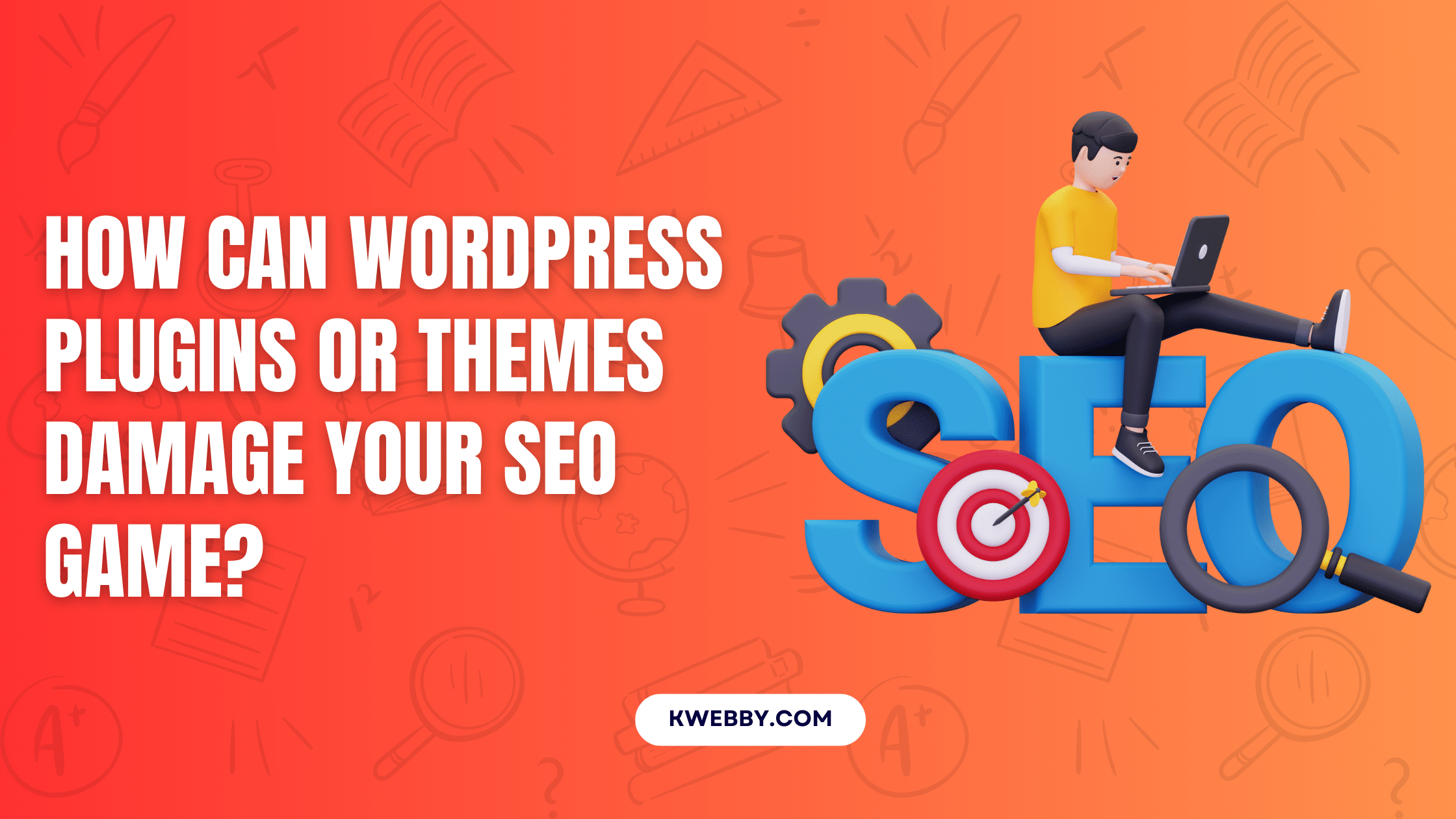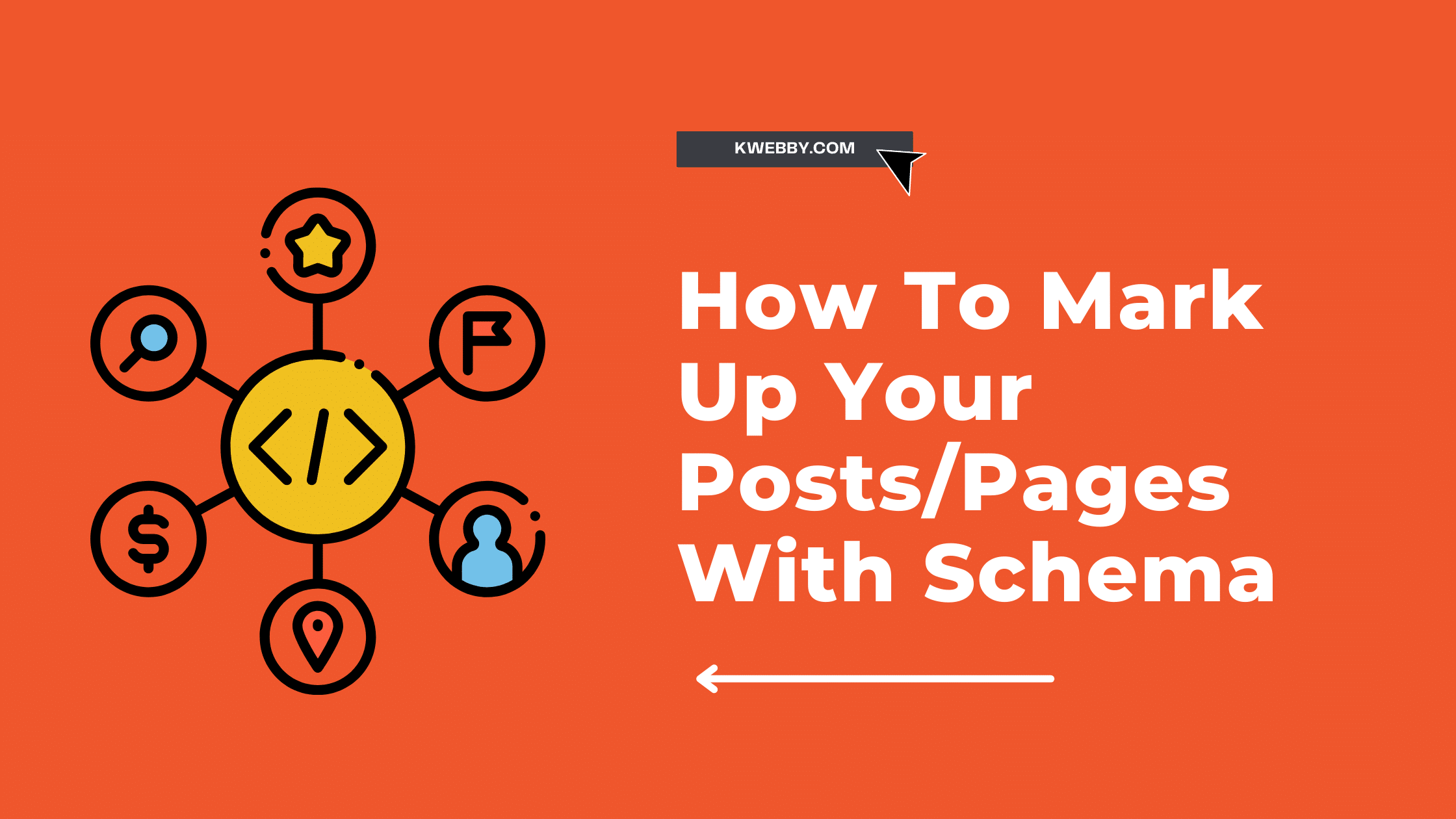
How to Update PHP in WordPress (For All Hosts)
Choose Your Language:
Would you like to change your WordPress website’s PHP version?
You may greatly enhance the usability and performance of your WordPress website by updating to the most recent version of PHP. Although updating is often simple with many web hosts, you might need to double-check a few things first.
We’ll walk you through the process of quickly updating the PHP version of your WordPress website in this article.
Also learn, How to find Page or Post ID in WordPress Without a Plugin
What to Do Before Updating PHP in WordPress
Before taking the leap to update your PHP version, it’s crucial to ensure your WordPress site remains undisturbed and error-free during the transition. Adhering to these preparatory steps not only smoothes the update process but also secures your website’s performance and compatibility:
Update all components of your WordPress site: It’s essential to ensure that your WordPress core, along with any themes and plugins, are updated. This guarantees compatibility with the new PHP version. Top WordPress plugins, especially those from credible sources, are generally designed to work seamlessly with newer PHP versions, enhancing the site’s functionality and security.
Backup your website: Implementing a backup solution, such as the Duplicator plugin, safeguards your website by creating a complete backup. In the event of any complications arising from the PHP upgrade, you have the assurance of restoring your site to its pre-update state, ensuring no loss of data or functionality.
Initiate a staging environment: Undertaking the PHP update on a staging site first is highly advised. This step acts as a preventive measure, catching any potential issues that could disrupt your live site. By identifying and resolving these issues in a controlled environment, you maintain your site’s integrity and visitor experience.
Employ the PHP Compatibility Checker plugin: Developed by WP Engine, this powerful tool scans your site for any incompatibilities with the new PHP version. It provides invaluable insights, helping you address any concerns proactively before applying the update to your live site.
By meticulously following these guidelines, you can smoothly transition to the latest PHP version, ensuring your WordPress site remains robust, secure, and in line with modern web standards.
How to Check Your Current PHP Version in WordPress
Checking the current PHP version of your WordPress website is a straightforward process, made simple by the intuitive interface of the WordPress dashboard.
To begin;
- You must log into your WordPress admin area
- then navigate to the Tools section
- select the ‘Site Health’ option.
- Within Site Health, shift your focus to the ‘Info’ tab where you will find a comprehensive overview of your site’s health.
- Scrolling down, you will need to locate and expand the ‘Server’ section by clicking on it

This action reveals detailed information about your server, including the critical detail of your site’s PHP version. This step is pivotal for those looking to update PHP in WordPress, as it ensures that your site is running efficiently and securely on the latest PHP versions.
By staying current with the newest PHP updates, website owners can leverage improvements in speed, security, and performance, ultimately enhancing the site running experience for your website’s visitors and bolstering your site’s ranking in search engines.
Incorporated in this section of navigating your WordPress site’s PHP settings, you’ll also gain insights into other server configurations. This is beneficial for assessing your site’s compatibility with new PHP versions before undertaking the update process.
Whether you’re maintaining an up-to-date WordPress version or ensuring your web host supports the latest stable version of PHP, each step towards updating PHP versions contributes to a more secure, swift, and reliable WordPress site, reflecting positively on your website’s overall health and user experience.
How to Update Your PHP Using CPanel
Step 1: Log in to Your Cpanel Dashboard
The first step to updating your PHP version on your WordPress site is to log in to your Cpanel dashboard. This is where you can access all the necessary tools and settings to make changes to your server configurations.
Step 2: Locate the “Select PHP Version” Option

Once logged in, navigate to the “Software” section and click on “Select PHP Version.” This will take you to a page where you can view and manage all the available PHP versions on your server.
Step 3: Choose Your Desired PHP Version

On this page, you’ll see a list of all the available PHP versions for your use. Select the latest stable version of PHP or any other version that meets your site’s requirements. Click on “Set as current” to make this version the default for your site. You don’t need to add any PHP code for this.
Step 4: Save Changes and Check Compatibility
Now You can click on “Apply” to save changes, and the WordPress PHP version will automatically be upgraded. You can check PHP version using any WordPress Plugin.

How to Update Your PHP Version in Bluehost
Step 1: Log In to Your Bluehost Control Panel

First, access your Bluehost hosting account by logging in. Once you’re in, look for the ‘Websites’ tab on the left column of your dashboard. This area is your gateway to managing all aspects of your WordPress website, including the crucial task of updating PHP versions.
Step 2: Select Your Website and Access Settings

Under the ‘Websites’ tab, identify and select the WordPress site for which you wish to update the PHP version. After selecting your site, click on the ‘Settings’ button to proceed. This step brings you closer to enhancing your site’s performance and security by updating to a new PHP version.
Step 3: Navigate to the Advanced Settings

Once in the Settings menu, advance to the ‘Settings’ tab to explore more detailed configurations of your WordPress blog or website. This area includes various settings that control the behavior and performance of your site, providing a comprehensive overview of your site’s backend setup.
Step 4: Update PHP Version
Scroll down until you reach the MultiPHP Manager option to select your desired PHP Version.

Here, you’ll see your site’s current PHP version displayed. Click on the ‘Change’ link next to it to initiate the PHP update process.

Step 5: Select and Apply the New PHP Version

In the dropdown menu, you’ll find a list of available PHP versions. Select the new PHP version you wish to upgrade to, corresponding to the latest or your desired version for your site. After making your selection, confirm by clicking the ‘Change’ button.
Your hosting provider, Bluehost, will now apply the selected PHP version to your WordPress website, completing the update process. This update is pivotal in leveraging new features, fixing security vulnerabilities, and improving the overall health and performance of your WordPress site.
By following these step by step instructions, you can smoothly update the PHP version for your WordPress website on Bluehost, thus ensuring it runs on the latest stable version.
How to Update Your PHP Version in Hostinger
Step 1: Log In to Your Hostinger Dashboard

Begin by accessing your Hostinger account. Once logged in, proceed to the ‘Websites’ tab visible on the dashboard. This is where you manage the configurations of your WordPress website, including the essential action of updating your PHP version.
Step 2: Manage Your Website

In the ‘Websites’ section, find the specific WordPress site you wish to update. Click on the ‘Manage’ button adjacent to it. This will lead you to the dashboard dedicated to that particular website, setting the stage for the forthcoming PHP update.
Step 3: Access PHP Configuration

From this website’s dashboard, look for the ‘PHP Configuration’ option located under the Advanced menu in the left sidebar. This step is crucial as it directs you to where you can modify the PHP settings of your website, ensuring you can update to the latest PHP version for optimal performance and security.
Step 4: Choose the New PHP Version

Hostinger will display a list of available PHP versions that are compatible with your WordPress site. Carefully select the new PHP version that you intend to use from the dropdown menu.
It’s important to choose a version that will support all your website’s functionalities, including WordPress plugins and the default WordPress theme.
Step 5: Update and Confirm PHP Version

After selecting your desired PHP version, press the ‘Update’ button to initiate the update process. A confirmation popup will appear, requiring you to confirm the update.
Click ‘Confirm’ to proceed. This action ensures that your WordPress website runs on the latest PHP version, leveraging new features and addressing any security vulnerabilities afflicting previous versions.
How to Update Your PHP Version in DreamHost
Step 1: Log In to Your DreamHost Control Panel

Begin the process by logging into your DreamHost hosting account. Once inside, direct your attention to the left-side panel and locate the ‘Manage Websites’ tab.
Step 2: Choose Your Website

In the ‘Manage Websites’ section, you’ll see a list of your websites. Find the WordPress site you wish to update PHP for and click on the three-dot menu on the right-hand side. From the dropdown options, select ‘PHP Version’.
Step 3: Access PHP Settings

You will now be taken to the PHP settings page within the DreamHost control panel. This is where you can check your current PHP version and make necessary PHP updates to ensure your WordPress core, themes, and plugins operate seamlessly and are safeguarded against security vulnerabilities.
Step 4: Select the New PHP Version

On the PHP settings page, a dropdown menu will present various PHP versions that are available for your website. It is essential to choose a new PHP version that supports all aspects of your WordPress site, including the default WordPress theme and any active plugins.
Step 5: Confirm the PHP Version Update

After selecting the desired PHP version from the drop-down menu, click on ‘Change PHP Version’ to apply the update. This update process is critical for leveraging new features, ensuring compatibility with the latest WordPress version, and enhancing your site’s security.
By following these step-by-step instructions, you can successfully update the PHP version of your WordPress website hosted on DreamHost.
How to Update Your PHP Version in WP Engine
Step 1: Log In to Your WP Engine Dashboard
To update PHP for your WordPress website, start by logging into your WP Engine dashboard. WP Engine, as a managed WordPress hosting provider, simplifies the process of PHP updates, ensuring your site runs on the latest version for enhanced site health and security.
Step 2: Locate Your Website under ‘My Sites’
Once logged in, navigate to the ‘My Sites’ page. Here, you will find a list of your WordPress sites. Click on the PHP version link next to the website you wish to update. This action directs you to your website’s Overview settings, a central place for your site’s PHP management.
Step 3: Preview the Latest PHP Version
WP Engine offers a unique feature that allows you to preview your WordPress website on the new PHP version without making any permanent changes. To utilize this, click on ‘Preview PHP …’ next to your selected PHP version.
This is a valuable step for testing compatibility and ensuring that your WordPress plugins and themes function correctly with the newer version of PHP.
Step 4: Navigate to the ‘Updates’ Section
After previewing and if you decide to proceed with the update, scroll down to the ‘Updates’ section of your website’s Overview settings. Look for the PHP version number link and click on it. This is where you initiate the PHP upgrade process for your WordPress site.
Step 5: Select and Confirm the PHP Upgrade
In the Updates section, you’ll find an option to ‘Upgrade to PHP …’ displaying the latest stable version. Select this option to move forward with the PHP update. A dropdown menu will appear with new PHP versions available. Choose your new PHP version and click on the ‘Confirm’ button.
This step finalizes your choice and updates your WordPress site’s PHP to the latest PHP version, ensuring your site benefits from new features, improved memory usage, and resolves any security vulnerabilities found in older versions.
By following these step-by-step instructions, you can manually update the PHP version of your WordPress website hosted on WP Engine.
Regularly updating your PHP version is crucial for maintaining optimal site health, site running efficiency, and compatibility with the latest WordPress core files and plugins.
FAQs
What are the main benefits of keeping your PHP up-to-date?
Upgrading your PHP to the latest stable version is a crucial strategy for enhancing your WordPress website’s performance and security. Each new version of PHP introduces improvements in efficiency, potentially accelerating your website’s loading times significantly.
Adhering to WordPress’s current recommendation for PHP versions, particularly versions 7.4 or higher, can result in a performance boost benefiting everyone who visits your site. Additionally, securing your website becomes more manageable with the latest PHP version.
Given PHP’s widespread use and its maintenance by a global community, it inherently becomes a focal point for hacker activities. However, the newest PHP versions come equipped with advanced security measures to protect against threats. Conversely, outdated PHP versions, especially those below 7.4, lack these critical security features, making updates indispensable for safeguarding your WordPress site.
What should you do after updating the PHP version?
Following the PHP version upgrade, it’s pivotal to verify that your WordPress website continues to function flawlessly. We advocate for conducting an immediate visit to your web page to spot any overt complications post-update.
Subsequently, access the WordPress dashboard of your site to confirm that both WordPress and all associated themes and plugins are up to date. It’s imperative to ensure that your site is employing the latest WordPress version along with the freshest iterations of plugins and themes to maintain optimal site health and efficiency.
How to Update Your PHP Version in Other WordPress Hosting Providers
Most WordPress hosting services tend to mirror each other in how they arrange their settings, often keeping the option to switch PHP versions within the advanced sections of your cPanel or alternative hosting control panels.
Should this option elude you, a thorough look through your hosting provider’s knowledge base or a query to their support team should set you on the right path to change your WordPress website’s PHP version.
Conclusion
In conclusion, understanding how to update PHP in WordPress is paramount for any website owner seeking to optimize site health, enhance security against vulnerabilities, and ensure compatibility with the latest WordPress core files and plugins.
By carefully following the step-by-step instructions provided, WordPress site administrators can efficiently perform a PHP upgrade, leveraging the benefits of the new PHP versions. It’s imperative to routinely check your PHP version through your hosting account’s control panel or the WordPress site health tool to maintain your site’s performance and security at peak levels.
Additionally, keeping abreast of the current PHP version and upcoming PHP updates can prevent potential issues that an outdated version might cause. Although the process might seem daunting, hosting providers are generally equipped with support teams to assist you, whether it’s through SSH access, staging sites, or directly on your live site.
Remember, the ultimate goal is to ensure that your WordPress websites run smoothly, providing a seamless experience for your website’s visitors while staying up to date with new features and advancements in programming language.
Test your knowledge
Take a quick 5-question quiz based on this page.




